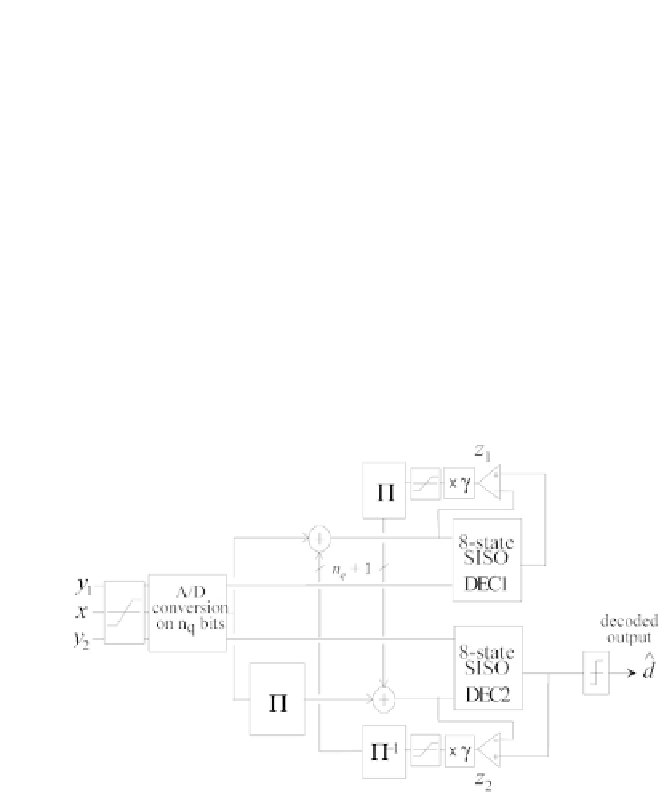Cryptography Reference
In-Depth Information
After
p
iterations, the output of DEC1 is:
LLR
p
output,
1
(
d
)=(
x
+
z
p−
1
(
d
)) +
z
1
(
d
)
2
and the output of DEC2 is
LLR
p
output,
2
(
d
)=(
x
+
z
p−
1
(
d
)) +
z
2
(
d
)
1
If the iterative process converges towards a stable solution,
z
1
(
d
)
z
p−
1
1
−
(
d
)
and
z
2
(
d
)
z
p−
2
(
d
)
tend towards zero when
p
tends towards infinity. Consequently,
the two LLRs relative to
d
become identical, thus satisfying the basic criterion of
common probability mentioned above. As for proof of the convergence, it is still
being studied further and on this topic we can, for example, consult [7.49, 7.24].
Apart from the permutation and inverse permutation functions, Figure 7.13
details the operations performed during turbo decoding:
−
Figure 7.13 - Operations shown (clipping, quantization, attenuation of the extrinsic
information) in the turbo decoder of Figure 7.12.
1. Analogue to digital (A/D) conversion transforms the data coming from
the demodulator into samples exploitable by the digital decoder. Two
parameters are involved in this operation:
n
q
, the number of quantization
bits, and
Q
, the scale factor, that is, the ratio between the average absolute
value of the quantized signal and its maximum absolute value.
n
q
is fixed
to a compromise value between the precision required and the complexity
of the decoder. With
n
q
=4
, the performance of the decoder is very
close to what we obtain with real samples. The value of
Q
depends on
the modulation, on the coding rate and on the type of channel. It is, for
example, larger for a Rayleigh channel than for a Gaussian channel.



